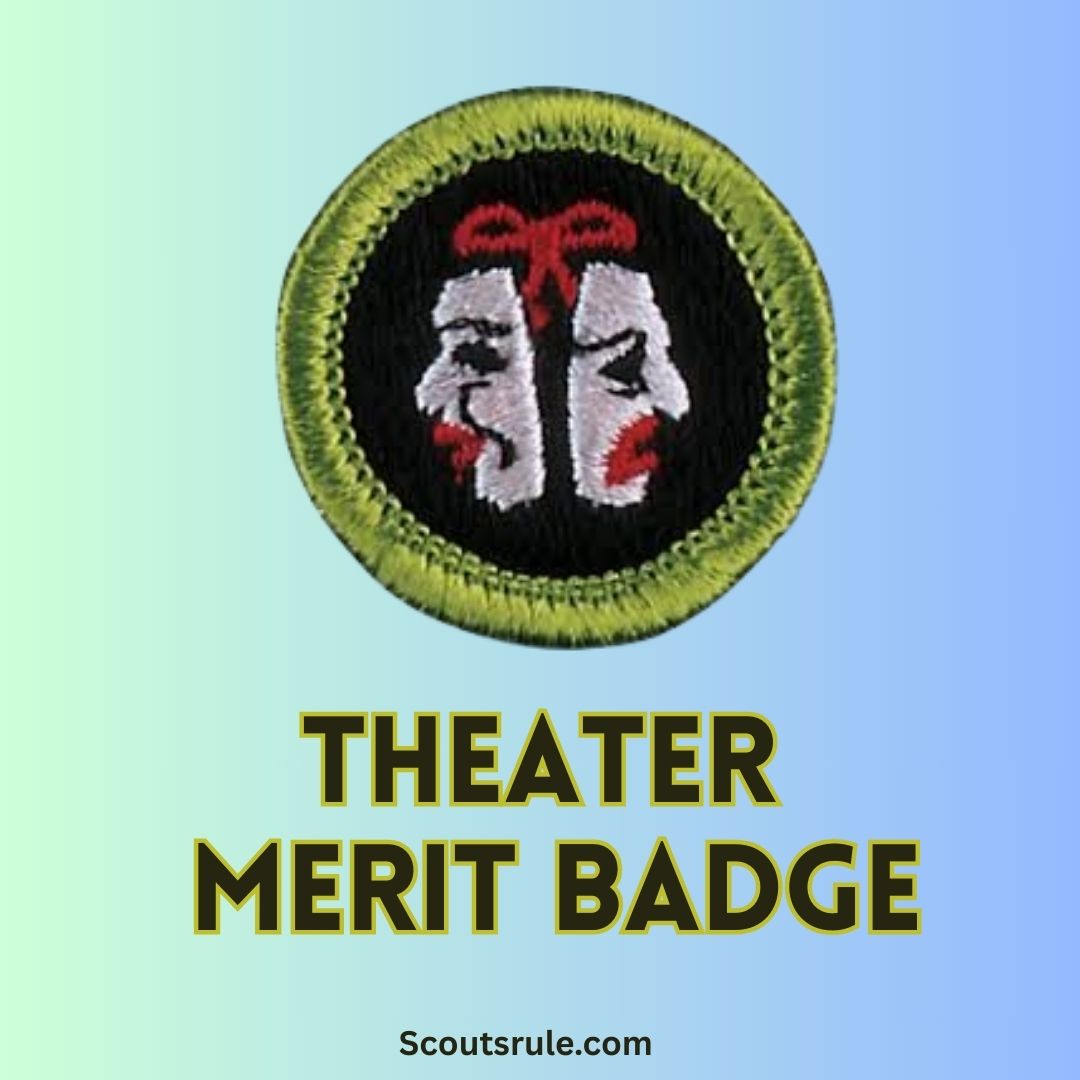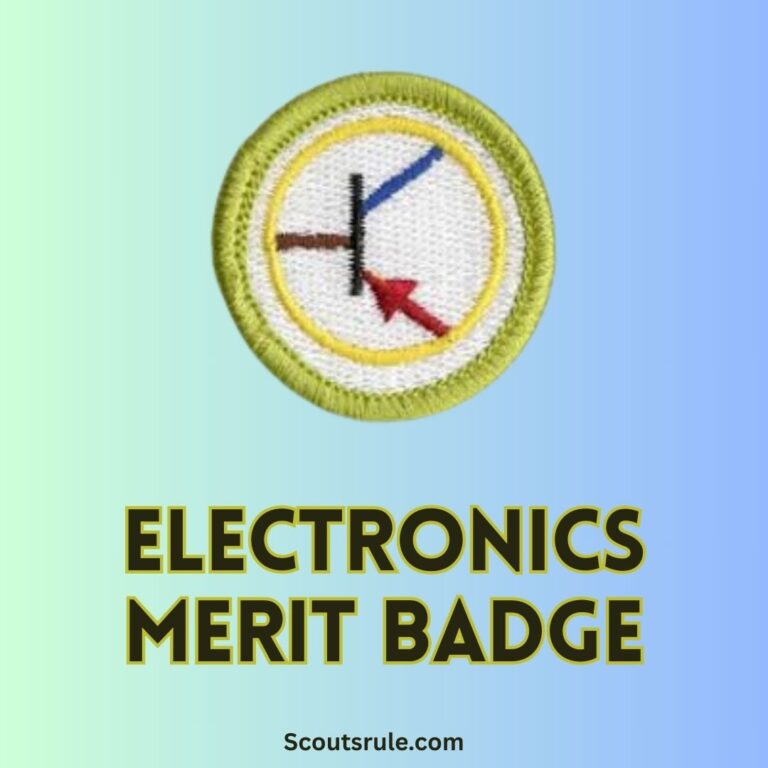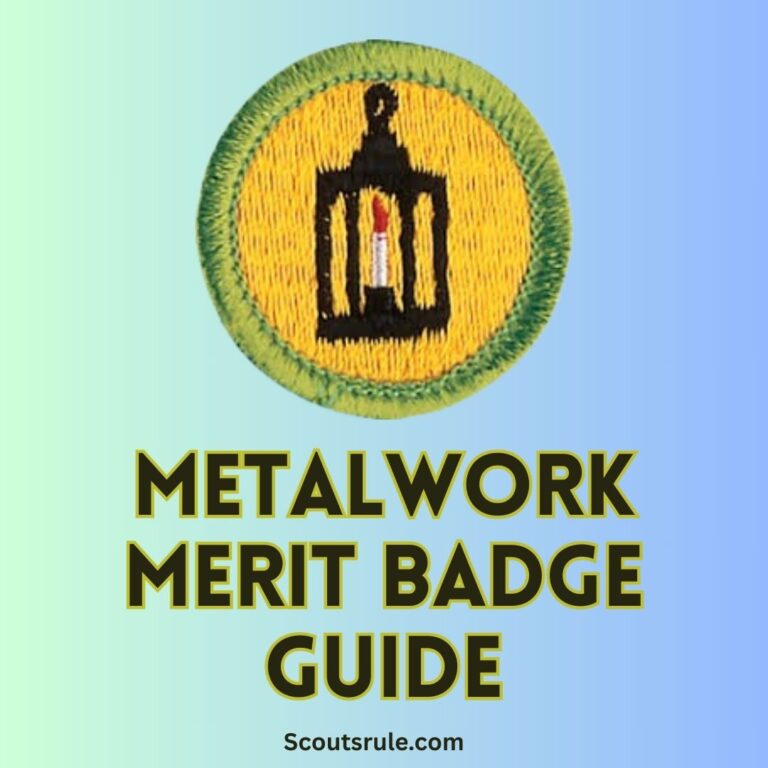
This guide is designed to help Scouts explore the diverse world of theater—from absorbing full-length plays and writing original one-act plays to participating behind the scenes in productions and discussing theater safety and etiquette. Whether you dream of taking center stage, directing a cast, or designing a memorable set, this guide will walk you through each requirement step by step, provide practical project ideas, and offer insights into the skills and values that theater develops.
Post Contents
- The Magic of Theater
- Theater Merit Badge Requirements
- 2. Why Theater? The Value of Dramatic Arts in Scouting
- 3. Overview of the Theater Merit Badge
- 4. Detailed Requirements and How to Meet Them
- 5. Developing a Theater Program: Planning, Scriptwriting, and Rehearsals
- 6. Theater Etiquette, Collaboration, and Teamwork
- 7. Careers and Lifelong Benefits
- 8. Practical Tips, Resources, and Further Guidance
- Conclusion: Taking the Stage in Life and in Theater
The Magic of Theater
Imagine the excitement of standing on a stage, the soft glow of lights, and the hushed anticipation of an audience waiting to be transported to another world. Theater is a realm that blends creativity, discipline, and self-expression. It offers an opportunity to transform emotions into art, tell stories that inspire, and learn the value of collaboration, organization, and practice. The Theater Merit Badge is a journey into this dynamic world, inviting you to explore every facet of dramatic arts.
In earning this badge, you will learn to appreciate the richness of live performance, the craftsmanship behind playwriting and production design, and the nuanced art of acting, directing, or working behind the scenes. Whether you are naturally drawn to perform or prefer the technical aspects that make a production shine, the badge gives you the chance to dive deep into a field that celebrates creativity and human connection.
Theater Merit Badge Requirements
1. See or Read Three Full-Length Plays
- Task: Watch or read three full-length plays and write a review of each.
- Discussion Points:
- Summarize the plot or story of each play.
- If you watched the plays, comment on the acting and staging.
- Share your thoughts with your counselor, focusing on what you learned about storytelling and performance.
2. Write a One-Act Play
- Task: Create a one-act play that takes at least 10 minutes to perform.
- Key Elements:
- Include a main character, a conflict, and a climax.
- Ensure your play has a clear beginning, middle, and end.
- Reflection: Discuss your creative process with your counselor, including how you developed the characters and storyline.
3. Theater Safety
- Task: Discuss safety precautions in a theater setting to protect the cast and crew.
- Examples of Safety Measures:
- Proper handling of props and set pieces.
- Awareness of fire exits and emergency procedures.
- Safe use of lighting and sound equipment.
4. Choose and Complete Three Theater Activities
Select three of the following options and complete them with your counselor’s approval:
- (a) Act in a Play:
- Perform a major role in a full-length play or act in three one-act plays.
- (b) Direct a Play:
- Cast, rehearse, and stage a play that is at least 10 minutes long.
- (c) Design a Set:
- Create a model of the set for a play or theatrical production.
- (d) Design Costumes:
- Design costumes for five characters in a production set in a historical time period.
- (e) Hair and Makeup Design:
- Show skill in hair and makeup design by transforming yourself or a friend into a historical figure, clown, extraterrestrial, or monster.
- (f) Build Scenery:
- Help with the building and painting of scenery for a production.
- (g) Design Lighting:
- Design or assist with the installation, focusing, and programming of lighting for a play.
- (h) Operate Sound:
- Help install, program, and operate the sound system for a production.
- (i) Stage Manager:
- Serve as the stage manager for a production, documenting all cues and setups in your calling script.
- (j) Musical Director:
- Serve as the musical director for a musical theater production.
5. Mime or Pantomime
- Task: Perform a mime or pantomime chosen by your counselor.
- Options Include:
- Entering a large room filled with pictures, furniture, and other items of interest.
- Dropping your books into a puddle while getting on a bus.
- Other scenarios as directed by your counselor.
2. Why Theater? The Value of Dramatic Arts in Scouting
Theater is about more than just entertainment. It teaches vital life skills:
- Communication: Effective verbal and nonverbal communication are cornerstones of theater. You learn how to express complex emotions, deliver clear messages, and convey ideas with passion and clarity.
- Teamwork: Every theatrical production depends on collaboration. Actors, directors, designers, and crew members work together, learning the importance of cooperation, listening, and sharing responsibilities.
- Creativity and Problem Solving: Whether it’s finding innovative ways to convey a theme on stage or working out logistics backstage, theater encourages creative thinking and practical application.
- Confidence and Leadership: Performing or directing requires courage and self-assurance. By pairing preparation with spontaneous creativity, you build confidence that extends beyond the stage.
- Cultural and Historical Awareness: Theater reflects society and history. Through plays, you learn about different cultures, historical events, and timeless stories that continue to influence our lives.
The values instilled by theater complement the principles of Scouting—integrity, respect, and service—and prepare you for leadership in any field.
3. Overview of the Theater Merit Badge
The official guidelines for the Theater Merit Badge typically require you to:
- Engage with Theater as an Audience Member: Watch or read three full-length plays. Write reviews or summaries that discuss the plot, staging, and performance quality. These reviews help you understand the storytelling aspects and dramatic techniques that professional theater employs.
- Develop Your Own Play: Write a one-act play designed to last at least 10 minutes. Your play should have a clear structure, including a beginning, a development of conflict, a climax, and a conclusion. This activity develops creative writing skills and deepens your appreciation for script construction.
- Focus on Theater Safety: Discuss with your counselor the precautions necessary to protect a cast and crew from hazards in a theater setting. Consider the safety aspects of handling props, set pieces, lighting, and sound equipment.
- Select and Complete Three Theater Activities: You have several options available ranging from acting in a role, directing, designing sets, creating costumes, performing hair and makeup, helping build scenery, designing lighting or sound, serving as stage manager, or even acting as musical director. These activities provide hands-on experience with various aspects of theater production.
- Mime or Pantomime Requirement: Perform a mime or pantomime of a scenario chosen by your counselor. This activity focuses on nonverbal storytelling and helps develop physical expression skills, an essential part of the theatrical arts.
These requirements ensure that you not only learn about theater from an academic perspective but also engage practically in its many components, fostering a well-rounded education in the dramatic arts.
4. Detailed Requirements and How to Meet Them
Let’s examine each requirement in detail, along with suggestions and ideas for fulfilling them.
4.1 Requirement 1 – Exposure to Full-Length Plays
Objective: To gain a broad understanding of theater by experiencing different styles and genres.
What You Should Do:
- Watch or Read: Choose three full-length plays. These might include classic dramas (e.g., Shakespearean plays), modern dramas, or musicals.
- Write Reviews: For each play, write a review that covers:
- A concise summary of the plot.
- Observations on acting, staging, lighting, and sound design if you watched a production.
- Comparisons between the plays—what common techniques or themes can you identify, and what stands out uniquely in each?
- Reflections on how the play made you feel and what insights it provided about storytelling, social issues, or cultural values.
Tips:
- Take notes during your viewing or while reading.
- Discuss your thoughts with fellow Scouts or your counselor to deepen your understanding.
- Use the reviews as a springboard to think about what makes a production effective and memorable.
4.2 Requirement 2 – Write a One-Act Play
Objective: To demonstrate creative writing skills and understand the structure of dramatic works.
What You Should Do:
- Plan Your Play: Brainstorm ideas for a one-act play. Consider a theme or a story that resonates with you—this could be an adventure, a mystery, a personal journey, or a social commentary.
- Structure: Ensure your play includes:
- A clear beginning that introduces the characters and setting.
- A central conflict that drives the narrative.
- A climax where the tension peaks.
- A conclusion that provides resolution.
- Character Development: Construct well-defined characters who engage with the conflict. Even in a short play, even minor characters can add depth if they have distinct traits or motivations.
- Finalize and Revise: Write a complete script that will take at least 10 minutes to perform. Have peers or a theater mentor review your work and suggest improvements.
Tips:
- Use a storyboard or outline to visualize your play’s progression.
- Pay attention to dialogue—aim for brevity, clarity, and emotion in your character interactions.
- Consider incorporating stage directions to indicate movement or dramatic pauses.
4.3 Requirement 3 – Theater Safety
Objective: To ensure that you understand how to work safely in a theater environment.
What You Should Do:
- Discuss Safety Issues: Meet with your counselor to discuss potential hazards in a theater setting. These might include:
- The use and handling of props, set pieces, and costumes.
- Electrical safety when working with lighting and sound equipment.
- Fire safety and emergency exits.
- Safe stage practices to avoid physical injury during quick changes or complex scenes.
- Prepare a Safety Plan: Create a written document or presentation that outlines safety protocols you would follow during a production. Include:
- How to store and transport materials safely.
- Procedures for rehearsals and set changes.
- Guidelines for appropriate behavior backstage.
Tips:
- Use real-world examples from theater productions you have seen or read about.
- Discuss how safety is not just about preventing physical injuries—it also includes respecting each other’s space and time on and off the stage.
4.4 Requirement 4 – Theater Activities (Choose Three)
Objective: To gain practical experience in various facets of theater production.
Options: You must select and complete three activities from the following list (or other options approved by your counselor):
- Acting Roles: Perform as a major character in a full-length play or act in three one-act plays. Develop your skills through rehearsals, character analysis, and performance practice.
- Directing: Cast, rehearse, and stage a play. Learn to delegate roles, guide actors, and shape the overall vision of the performance.
- Set Design: Create a detailed model of the set for a theatrical production. Consider scale, structure, color, and thematic elements.
- Costume Design: Design outfits for at least five characters set in a historical period. Research period-appropriate fabrics, styles, and accessories.
- Hair and Makeup Design: Transform someone into a historical figure, clown, or fantastical creature. Practice techniques to create distinctive looks that support a character’s personality.
- Scenery Construction: With counselor approval, help build and paint scenery. This hands-on activity teaches teamwork and practical construction skills.
- Lighting Design: Assist with or design the lighting for a play. Learn how different lighting effects can influence the mood, focus the audience’s attention, and support narrative transitions.
- Sound Operation: Participate in setting up, programming, or operating the sound system used in a production.
- Stage Management: Take on the role of stage manager. Document cues, stage arrangements, and overall organization of the production in a calling script.
- Musical Directing: If a production includes musical numbers, serve as musical director to coordinate musical cues, rehearsals, and stage action.
Each activity provides a unique opportunity to learn a specific aspect of theater. Choose the combination that best suits your interests and strengths. Document your process—take photographs, record rehearsals, or keep a detailed log of your contributions—and be prepared to discuss what you learned in each role.
4.5 Requirement 5 – Mime or Pantomime Performance
Objective: To communicate a story or scenario exclusively through body movement and facial expressions, developing nonverbal expression skills.
What You Should Do:
- Select a Scenario: Choose one scenario from the list provided by your counselor (for example, entering a large room filled with interesting objects or dropping your books in a puddle when boarding a bus).
- Rehearse the Performance: Practice your mime or pantomime at home or with your troop. Focus on clarity of movement, dramatic timing, and the expression of emotions without dialogue.
- Record Your Performance: If possible, record your mime for review. Analyze your performance and identify areas for improvement.
- Discuss with Your Counselor: Explain the choices you made in your performance (such as how you used gestures to convey a story or emotion) and how you refined your technique during rehearsals.
This final performance component emphasizes creativity, physical expression, and the ability to communicate meaning without words—an essential skill in all forms of theater.
5. Developing a Theater Program: Planning, Scriptwriting, and Rehearsals
Once you have completed your individual assignments, you might choose to take your work further by developing an entire theater program for your troop or community event.
Planning the Program
- Define the Purpose: Decide what message or theme you want to communicate. Is it meant to entertain, educate, or celebrate a community event?
- Structure of the Program: Organize your program to include an opening address, a series of performances (which might incorporate scenes from plays you’ve seen or your original one-act play), and closing remarks.
- Integrate Various Elements: If possible, include different theater elements such as acting, costuming, and technical effects in one cohesive event.
Developing a Script
- Write a Cohesive Script: Whether you are directing the program or writing one of the plays, ensure that the script has structured acts, clear dialogue, and designated stage directions.
- Rehearsals: Conduct several rehearsals with all participants. Use rehearsals to refine the timing of scenes, adjust transitions, and ensure that all safety protocols are understood.
Putting It All Together
- Coordination: Work closely with everyone involved—actors, set designers, technicians—to ensure that every part of the production aligns with your vision.
- Review and Feedback: After rehearsals, gather feedback from peers and counselors. Be prepared to make last-minute adjustments to improve clarity and impact.
This comprehensive project not only fulfills many of the theater requirements but also enhances your leadership and project management skills.
6. Theater Etiquette, Collaboration, and Teamwork
Good theater is built on a foundation of respect—both for the art and for the people involved.
- On-Stage Behavior: Understand and practice courtroom-like etiquette such as listening when someone is speaking and not interrupting a performance.
- Collaboration: Successful theatrical productions rely on effective teamwork. Whether you are acting, directing, or working behind the scenes, every participant must communicate clearly and coordinate efforts.
- Professionalism: Adhere to set protocols regarding punctuality, dress codes, and the respectful treatment of props and set pieces. Such discipline is essential as it demonstrates maturity and attention to detail.
Discuss these points during group rehearsals and with your counselor. You might even create a list of “Theater Etiquette Guidelines” that everyone in your troupe or group agrees to follow.
7. Careers and Lifelong Benefits
Pursuing the Theater Merit Badge can open up a world of opportunities. Whether you view theater as a hobby or as a potential career path, many avenues lie ahead:
- Acting and Performing Arts: Many professionals start on the stage before moving on to film, television, or live performance theaters.
- Directing and Production Management: Film, television, and stage productions require effective leadership and creative vision.
- Set and Costume Design: Specializing in the design aspect of theater can lead to work in both the entertainment industry and commercial fields.
- Technical Production: Careers in lighting, sound engineering, and stage management are crucial in keeping productions running smoothly.
- Arts Administration and Education: Teaching theater or administering arts programs is another rewarding path, allowing you to share your passion with future generations.
Explore these careers through interviews or shadowing professionals, and include your findings in a final report or presentation. Reflect on which career aspects resonate with you and align with your personal strengths and interests.
8. Practical Tips, Resources, and Further Guidance
Practical Tips
- Stay Organized: Keep a detailed journal of your projects, ideas, sketches, and practice sessions. This documentation will be invaluable not only for fulfilling the merit badge requirements but also as a portfolio for future endeavors.
- Practice Regularly: Whether it’s reading plays, rehearsing a one-act play, or practicing mime, regular practice hones your skills and builds confidence.
- Seek Feedback: Engage with your counselors, peers, or local theater groups. Constructive criticism is a key element in improving your work.
- Embrace Experimentation: Theater is a dynamic field. Don’t be afraid to try new techniques or experiment with different styles in your playwriting or performance.
- Utilize Technology: Record rehearsals, use digital tools for script editing, and gather ideas from online tutorials or theater communities. Websites such as Scoutles.com, ScouterMom.com, and the official BSA Theater Merit Badge page offer valuable resources.
Additional Resources
- Local Theater Productions: Attend live performances and backstage tours. Real-world experience can provide context and inspiration.
- Books and Articles: Explore books on acting techniques, playwriting, and theater history. These texts deepen your understanding of dramatic arts and offer practical advice.
- Workshops and Classes: Consider short workshops or community classes in dramatic arts. Engaging with professionals further solidifies your skills and knowledge.
Conclusion: Taking the Stage in Life and in Theater
Earning the Theater Merit Badge is a journey into the heart of performance and production. It challenges you to become a well-rounded theater artist—one who can appreciate the subtleties of a well-executed performance, craft compelling narratives, and work efficiently with a team. Through studying full-length plays, writing a one-act play, discussing essential safety measures, and engaging in hands-on activities, you not only meet the requirements of the badge but also build skills that apply to many areas of life.
As you advance through each requirement, remember that theater is much more than a series of tasks—it is an art form that celebrates diversity, encourages creative expression, and unites communities. The process of preparing and presenting a production teaches you the value of discipline, practice, and collaboration, while also offering insight into the professional world of dramatic arts. Whether you aspire to act, direct, design, or simply enjoy theater as a passionate audience member, the experiences you gain here will spark lifelong passion and bolster your abilities in creative thinking, communication, and leadership.

Hi, Robin here, A former lead Scout and here I share my inspiring stories about USA Scouts, leadership, adventure, how to guides and more.






